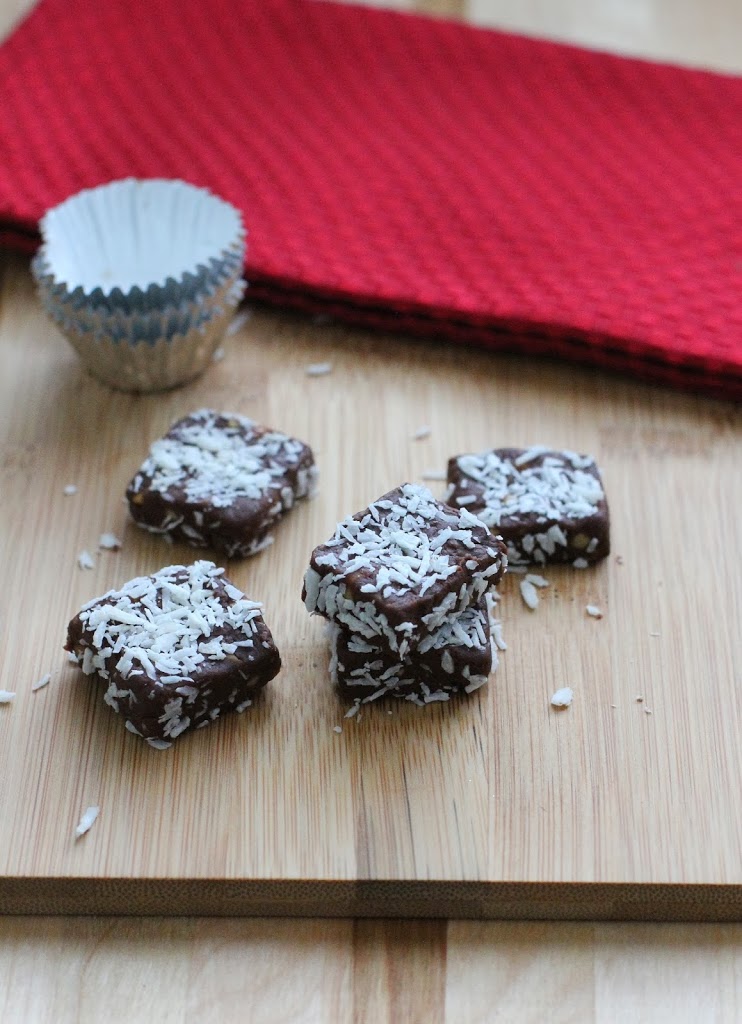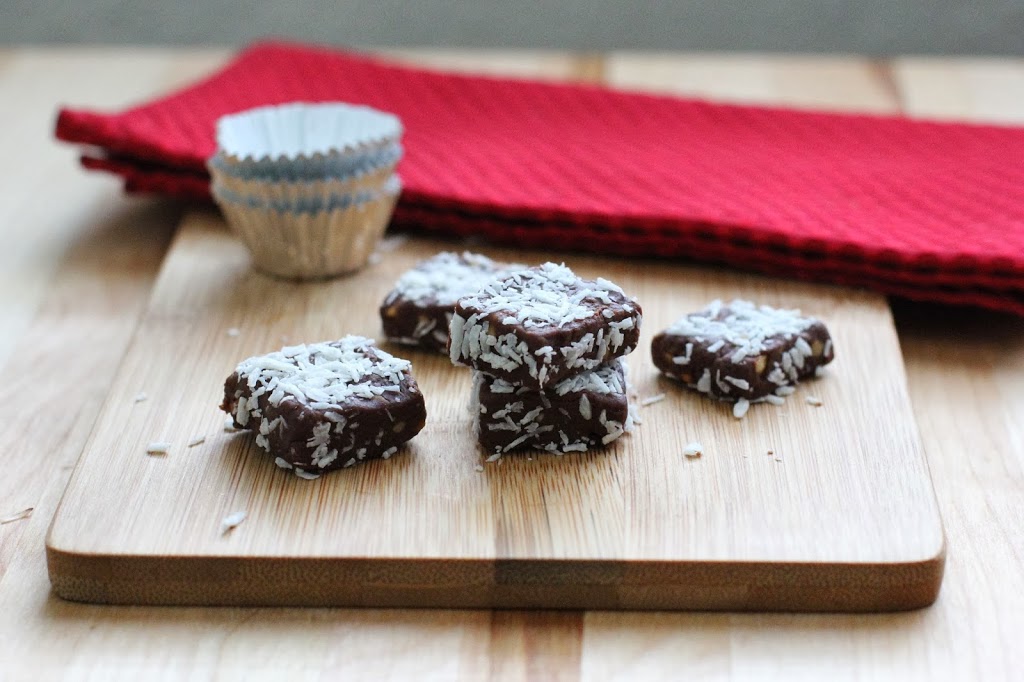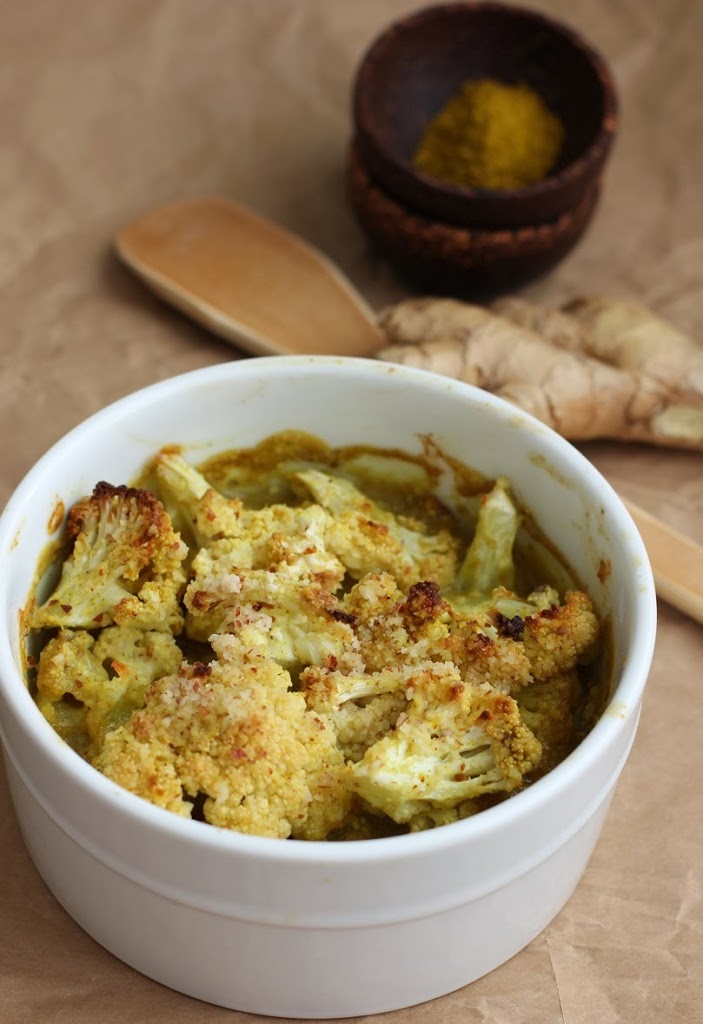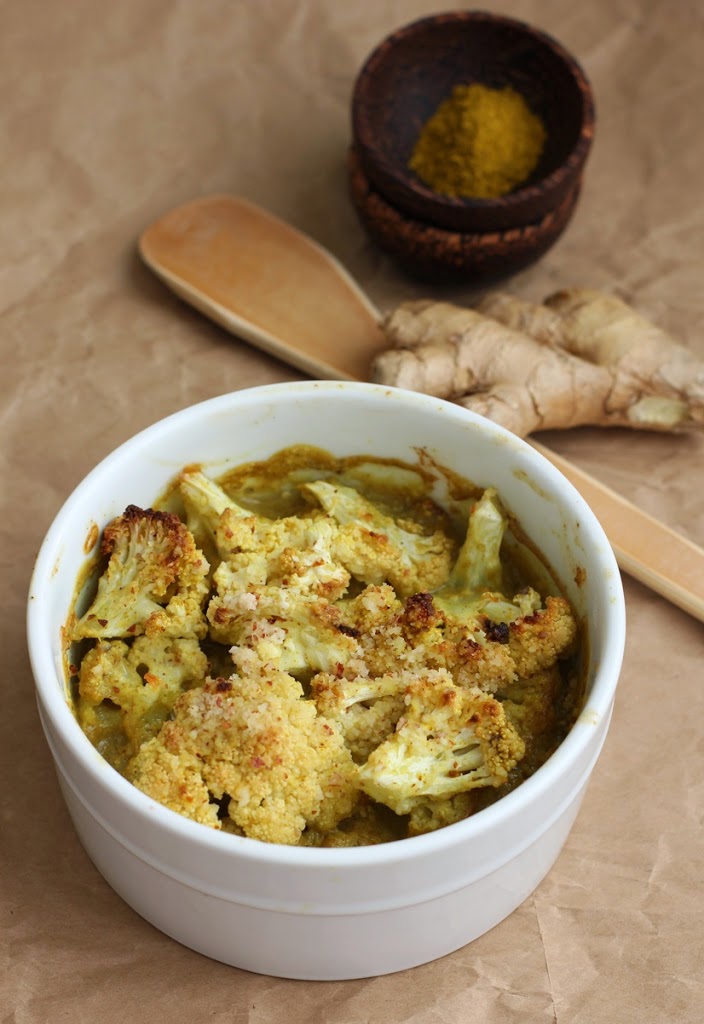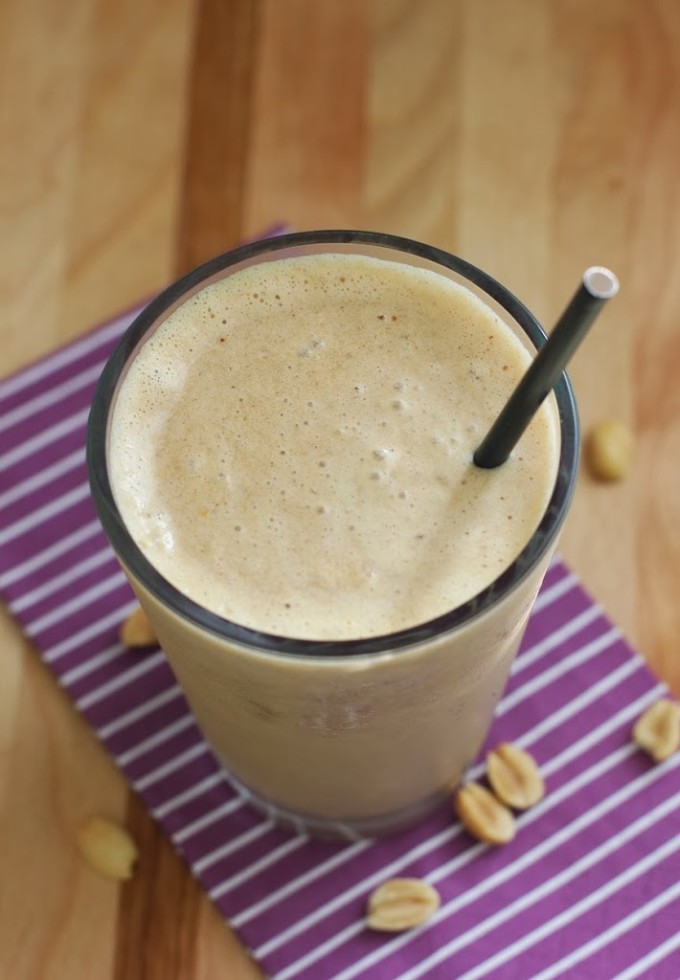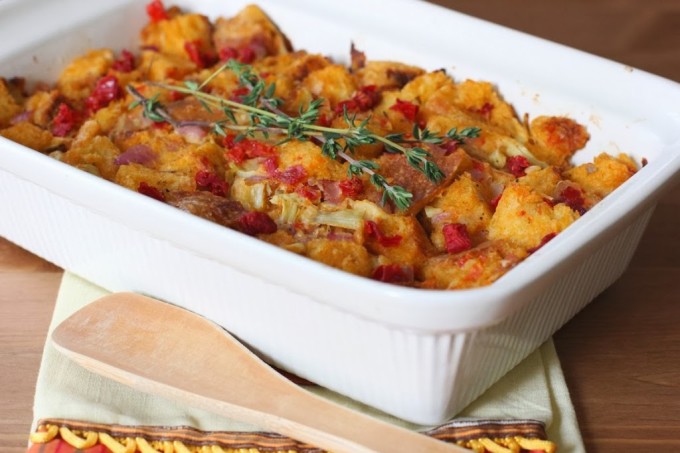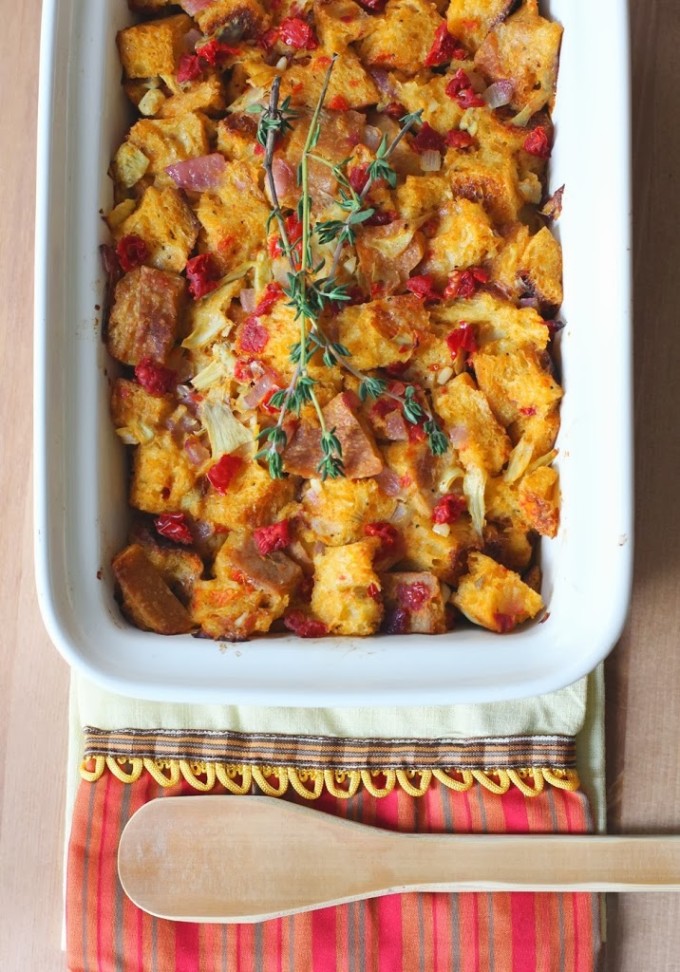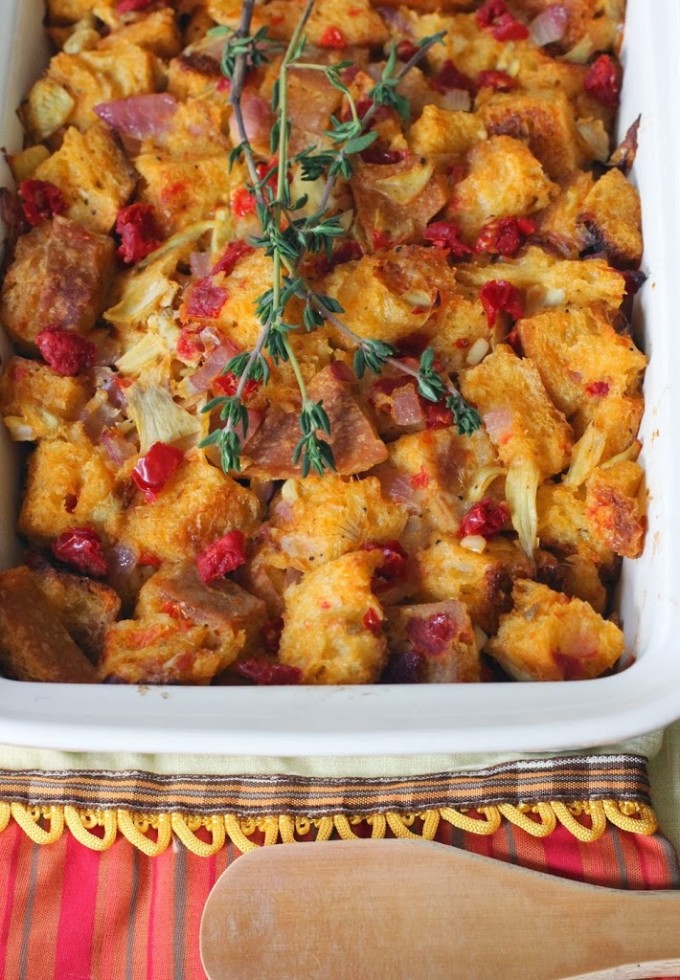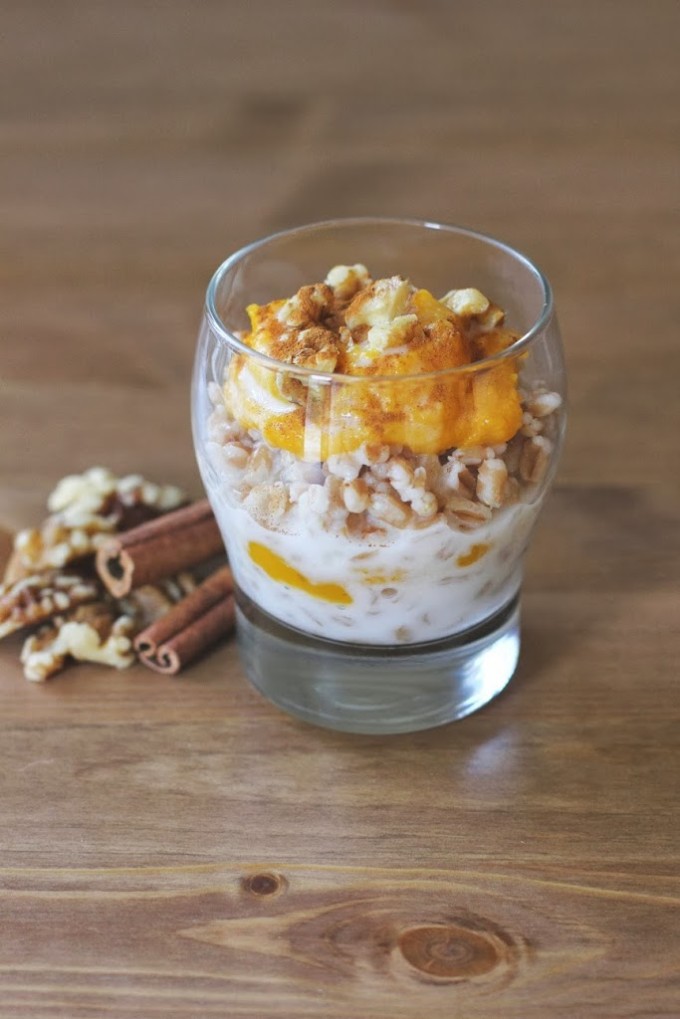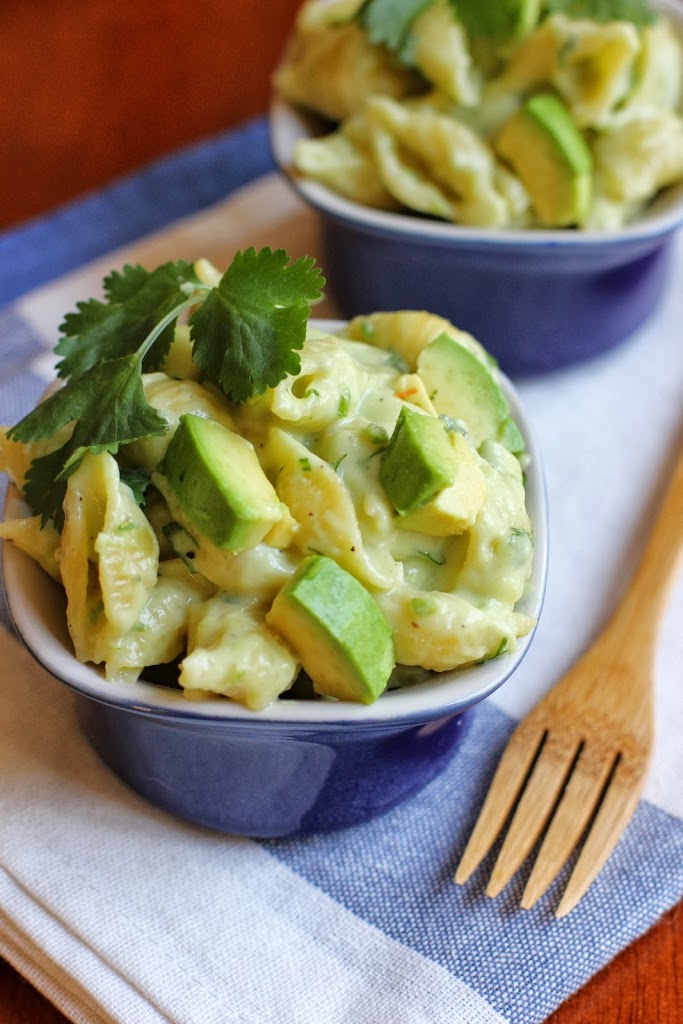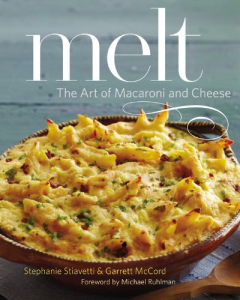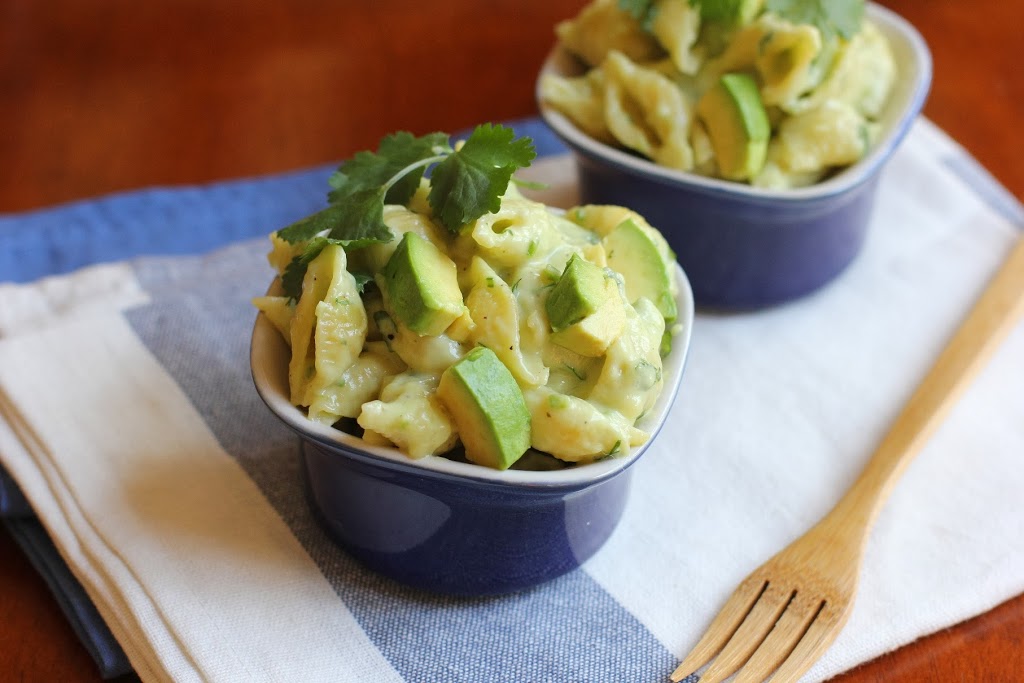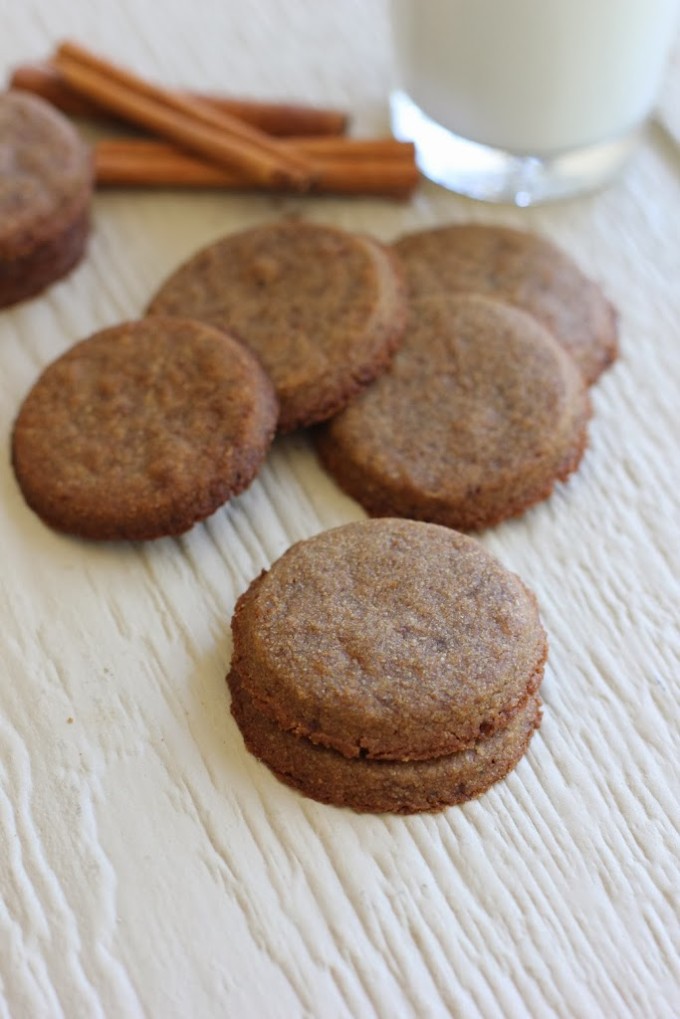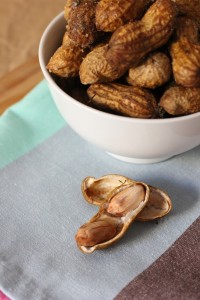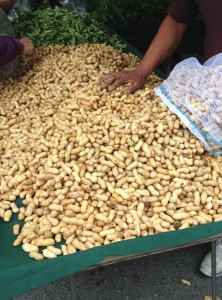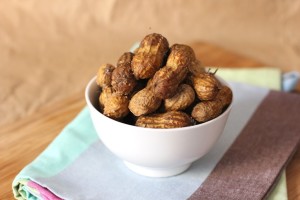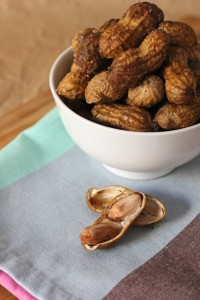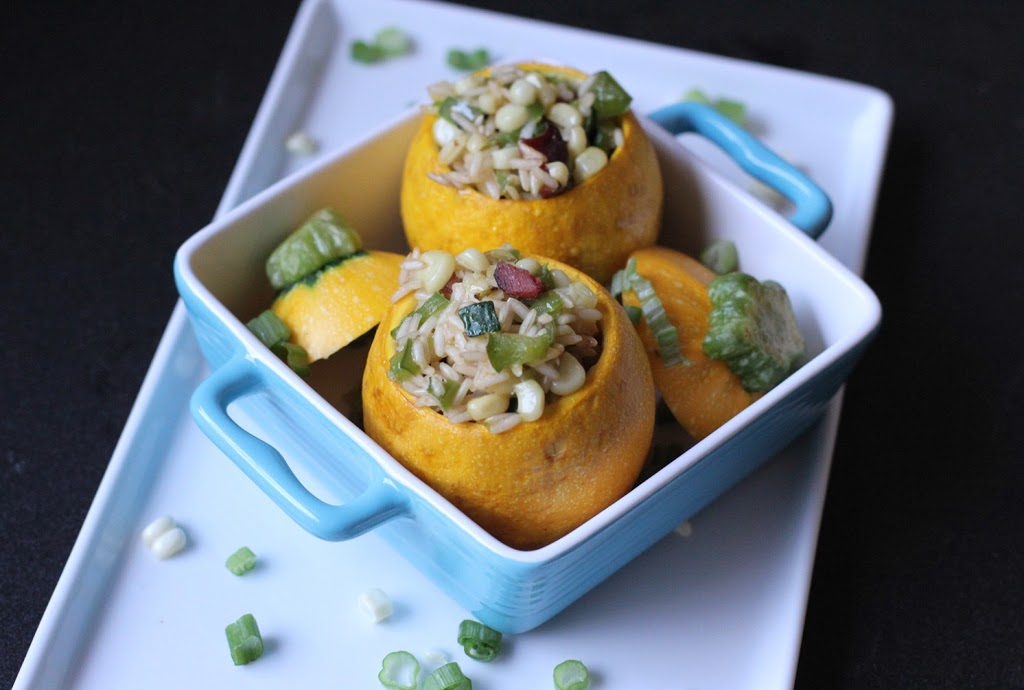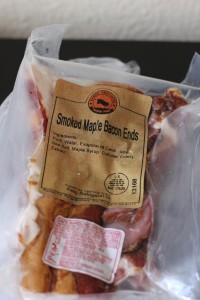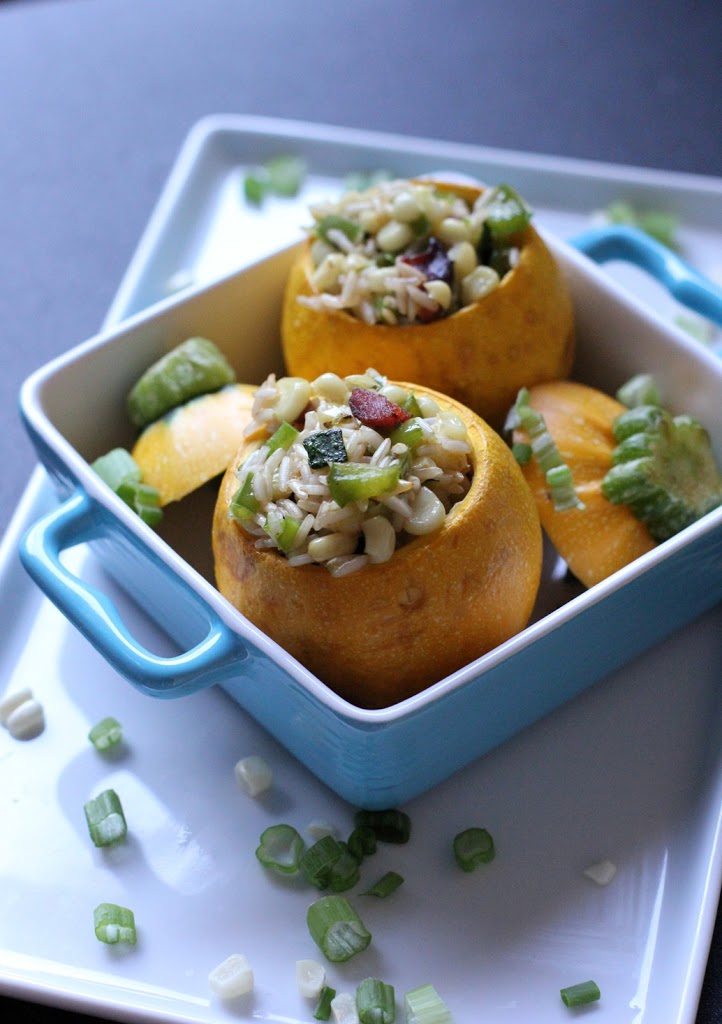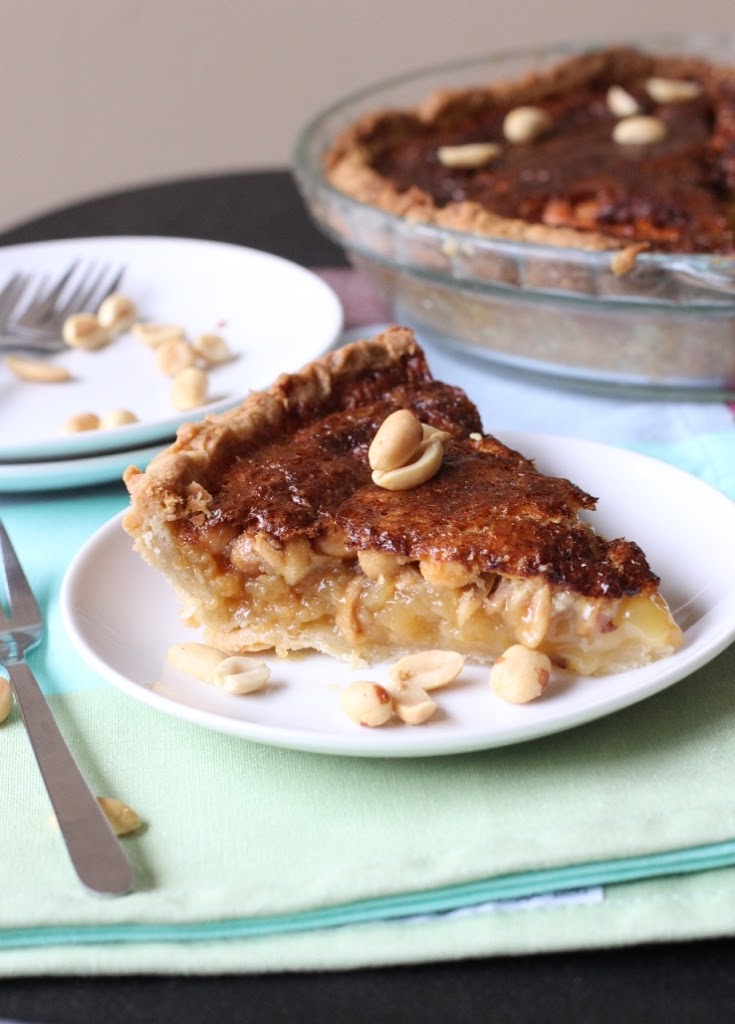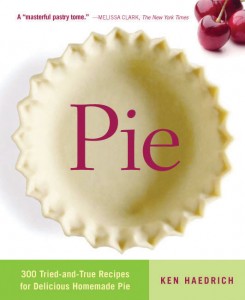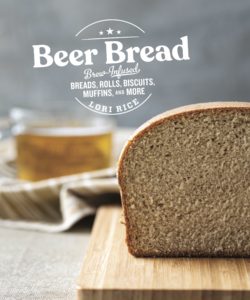I love food discoveries. Those times when you learn about a food which you never knew existed. A unique food or recipe that hails from a specific area or a local restaurant. It reminds me why I love food culture. It is also the reason why I branch out of the whole grain, raw sugar, fresh vegetable pattern to feature a little tradition and food history.
I had one of these food discoveries a few weeks ago. It was one that also just happened to align with my renewed love for peanuts.
I was flipping through a review copy of the cookbook Pie: 300 Tried-and-True Recipes for Delicious Homemade Pie by Ken Haedrich when I stumbled upon, Like Virginia Diner’s Peanut Pie. Peanut pie? I’d never heard of such a thing.
This cookbook is full of new-to-me recipes. Page after page of everything pie. And I’m no pie novice. I’m not an expert at making them, but my mom is. As a result, I’ve had my fair share of slices. Growing up we were a pie family — from-scratch chocolate pie and butterscotch pie, the most amazing pumpkin pie in the world (my grandmother’s), grape pie, raisin pie (although I wasn’t a fan of this one), gooseberry, strawberry-rhubarb, cherry, apple, pecan, coconut cream. You get the idea.
So finding new pies that impress me isn’t an easy task, but this cookbook accomplished it. There are combinations that I could never dream up like Coffee-Hazelnut Custard Pie, Orange Pie with Pistachio Crumb Crust and Pear and Jalapeno Jelly Pie. Many have an interesting story attached, a region that made them popular or a unique ingredient. Cream, silk, crumble, flaky, lattice — whatever the pie style, there is a recipe for it in here.
Now this isn’t a picture cookbook, although there are a few pretty photos gathered in the center as examples. It is a pie resource book. The one you turn to when you are curious about a traditional pie or you want something new to wow your guests.
Such as Peanut Pie.
If you are like me, your first thought when you hear peanut pie is peanut butter. Peanut as a dessert always equals peanut butter, right? I have since learned the answer to that is no.
This pie resembles pecan, but it’s different. I couldn’t put my finger on what was different until I was polishing off the last bite of crust. Good thing, or I might have needed a second slice.
Pecans are naturally sweet, making pecan pie a super sweet dessert. I do like it, but it’s the kind of sweet you only want around the holidays, and for me, one slice is enough. In peanut pie, the peanuts provide a more savory flavor that balances the sweetness. The peanuts stay crunchy, the crust flaky — it’s pretty much everything I ever wanted in a pie. To the point that I’ve vowed to make it instead of pecan for the holidays.
I could hear your shrieks of horror from here. Trust me, though. This pie is pretty special.
And if your cookbook shelf is aching for a pie resource. Look no further.
Like Virginia Diner’s Peanut Pie
Recipe © 2013 by Ken Haedrich and used by permission of The Harvard Common Press
From the book:
I had been hearing that a restaurant called the Virginia Diner, in Wakefield, Virginia, made the best peanut pie around, so I contacted one of the owners, who was quick to point out that the diner’s peanut pie is indeed deliciously world famous. She described it as “like a pecan pie, only better,” and, of course, she said, it is always made with great homegrown Virginia peanuts.
Having learned that there’s an inverse relationship between the level of self-hoopla and one’s chances of securing a recipe, I held my breath when I finally got around to asking her whether she would be willing to share the recipe with me and my readers. Alas, she would not, but she was kind enough to direct me to a Web site, www.aboutpeanuts.com, which has a recipe for peanut pie that is “pretty similar.” Would she care to enumerate the differences? “Sorry.” Turns out the recipe at that Web site, reprinted here with permission, is so good that I’ve forgiven the Virginia Diner for not sharing theirs. This pie is superlative: a golden layer of roasted peanuts on top of a soft and yummy filling. I always serve it with a scoop of vanilla ice cream and Warm Mocha Sauce (see cookbook).
Makes 8 to 10 servings
Ingredients
1 recipe Basic Flaky Pie Pastry, Single Crust (see below), refrigerated
FILLING:
3 large eggs
1/2 cup sugar
1 1/2 cups dark corn syrup
1/4 cup (1/2 stick) unsalted butter, melted
1/4 teaspoon salt
1/2 teaspoon vanilla extract
1 1/2 cups chopped salted dry-roasted peanuts
Instructions
- If you haven’t already, prepare the pastry and refrigerate until firm enough to roll, about 1 hour.
- On a sheet of lightly floured waxed paper, roll the pastry into a 13-inch circle with a floured rolling pin. Invert the pastry over a 91/2-inch deep-dish pie pan, center, and peel off the paper. Tuck the pastry into the pan, without stretching it, and sculpt the edge so it is even with the rim. Place in the freezer for 15 minutes, then partially prebake and let cool. Reduce the oven temperature to 350°F.
- In a large bowl, whisk the eggs and sugar together just until frothy. Whisk in the corn syrup, butter, salt, and vanilla until well blended. Stir in the peanuts. Slowly pour the filling into the cooled pie shell. Using a fork, gently rake the peanuts to distribute them evenly.
- Place the pie on the center oven rack and bake for 30 minutes, then rotate the pie 180 degrees, so that the part that faced the back of the oven now faces forward. Continue to bake until the filling is set and does not move in waves, about 20 minutes. To check, give the pie a quick nudge.
- Transfer the pie to a wire rack and let cool thoroughly. Serve at room temperature, or cover with loosely tented aluminum foil and refrigerate for 1 to 2 hours before serving.
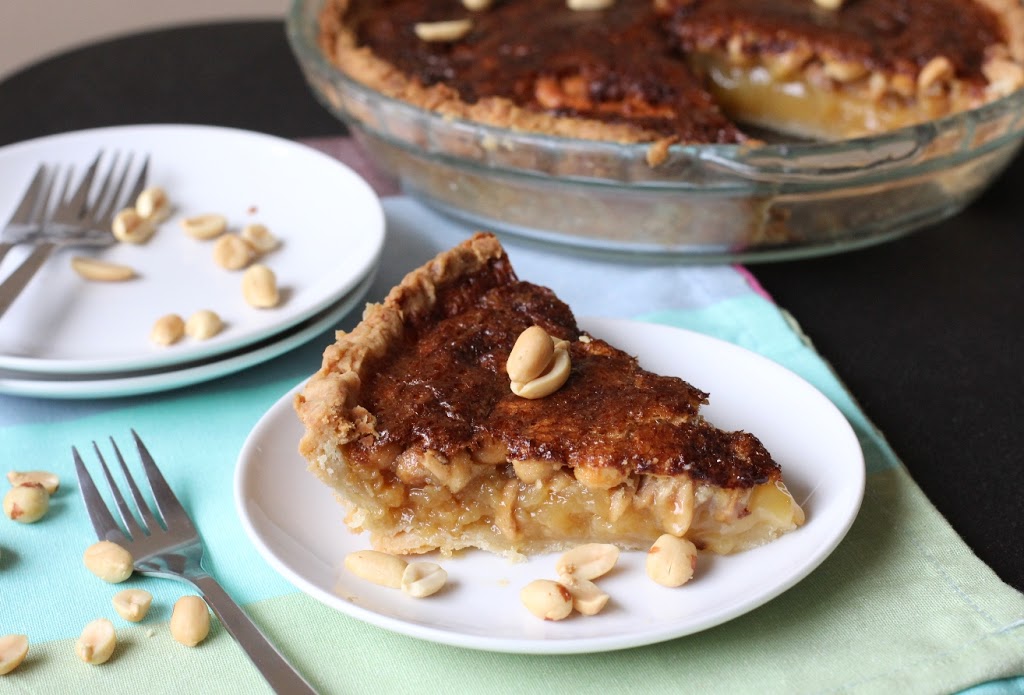
Recipe for Success
Be sure not to use unroasted peanuts here. The roasting really brings out the nut flavor. By the same token, do not use honey-roasted or other sweetened nuts or the pie may be too sweet.
Basic Flaky Pie Pastry
This pie pastry is used frequently throughout this collection because it yields such excellent results. I sometimes call it a half-and-half pastry, referring to the equal amounts of vegetable shortening and butter—the former for flakiness, the latter for flavor. It can be made in a food processor if you have a large-capacity machine. But I’ll repeat my usual advice, which is to make it by hand or with an electric mixer if you don’t. Both methods are quite easy. If you could have only one pastry to work with, this would probably be it.
Makes a single or double crust for a 9-inch standard pie or 9 ½-inch deep-dish pie
Ingredients
For a single crust:
1 1/2 cups all-purpose flour
1 1/2 teaspoons sugar
1/2 teaspoon salt
1/4 cup (1/2 stick) cold unsalted butter, cut into 1/4-inch pieces
1/4 cup cold vegetable shortening, cut into pieces*
1/4 cup cold water
For a double crust:
3 cups all-purpose flour
1 tablespoon sugar
1 teaspoon salt
1/2 cup (1 stick) cold unsalted butter, cut into 1/4-inch pieces
1/2 cup cold vegetable shortening, cut into pieces
1/2 cup cold water
Instructions
To make in a food processor: Put the flour, sugar, and salt in the food processor. Pulse several times to mix. Scatter the butter over the dry ingredients and pulse the machine 5 or 6 times to cut it in. Fluff the mixture with a fork, lifting it up from the bottom of the bowl. Scatter the shortening over the flour and pulse 5 or 6 times. Fluff the mixture again. Drizzle half of the water over the flour mixture and pulse 5 or 6 times. Fluff the mixture and sprinkle on the remaining water. Pulse 5 or 6 times more, until the dough starts to form clumps. Overall, it will look like coarse crumbs. Dump the contents of the processor bowl into a large bowl. Test the pastry by squeezing some of it between your fingers. If it seems a little dry and not quite packable, drizzle a teaspoon or so of cold water over the pastry and work it in with your fingertips.
To make by hand: Combine the flour, sugar, and salt in a large bowl. Toss well, by hand, to mix. Scatter the butter over the dry ingredients and toss to mix. Using a pastry blender, 2 knives, or your fingertips, cut or rub the butter into the flour until it is broken into pieces the size of small peas. Add the shortening and continue to cut until all of the fat is cut into small pieces. Sprinkle half of the water over the mixture. Toss well with a fork to dampen the mixture. Add the remaining water, 11/2 to 2 tablespoons at a time, and continue to toss and mix, pulling the mixture up from the bottom of the bowl on the upstroke and gently pressing down on the downstroke. Dough made by hand often needs a bit more water. If necessary, add water 1 or 2 teaspoons at a time until the pastry can be packed.
To make with an electric mixer: Combine the flour, sugar, and salt in a large bowl. Add the butter, tossing it with the flour. With the mixer on low speed, blend the butter into the flour until you have what looks like coarse, damp meal, with both large and small clumps. Add the shortening and repeat. Turning the mixer on and off, add half of the water. Mix briefly on low speed. Add the remaining water, mixing slowly until the dough starts to form large clumps. If you’re using a stand mixer, stop periodically to stir the mixture up from the bottom of the bowl. Do not overmix.
Using your hands, pack the pastry into a ball (or 2 balls if you are making a double crust) as you would pack a snowball. If you’re making a double crust, make one ball slightly larger than the other; this will be your bottom crust. Knead each ball once or twice, then flatten the balls into 3/4-inch-thick disks on a floured work surface. Wrap the disks in plastic and refrigerate for at least an hour or overnight before rolling.
*Just a note. I don’t use vegetable shortening in my baking so I used all butter in this crust and it turned out great.
*************************
If you are interested in perfecting your pie making skills, I just recently learned about Ken’s The Pie Academy. It is such a great resource with tools, tutorials and recipes focused on pie making. Be sure to check it out!
Disclosure: I received this cookbook for review purposes from the Harvard Common Press. I was not required to write about it and received no compensation for doing so.

